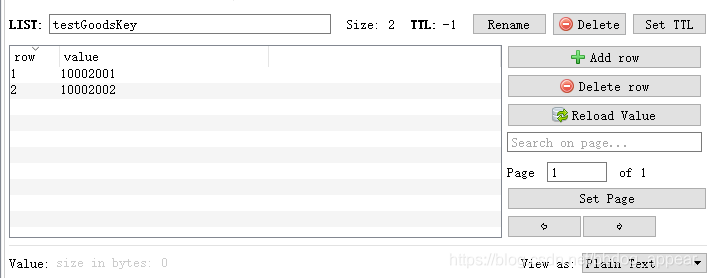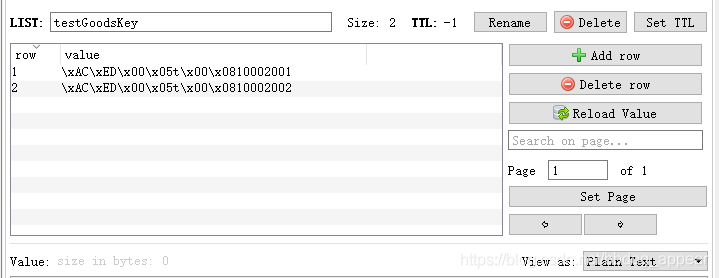RedisTemplate配置 序列和反序列化
对于redis操作,springboot进行了很好的封装,那就是spring data redis。提供了一个高度封装的RedisTemplate类来进行一系列redis操作,连接池自动管理;同时将事务封装操作,交由容器进行处理。
针对数据的“序列化和反序列化”,提供了多种策略(RedisSerializer)
默认为使用JdkSerializationRedisSerializer,同时还有StringRedisSerializer,JacksonJsonRedisSerializer,OxmSerializer,GenericFastJsonRedisSerializer。
简介一下
JdkSerializationRedisSerializer:POJO对象的存取场景,使用JDK本身序列化机制,将pojo类通过ObjectInputStream/ObjectOutputStream进行序列化操作,最终redis-server中将存储字节序列。是目前默认的序列化策略。
StringRedisSerializer:Key或者value为字符串的场景,根据指定的charset对数据的字节序列编码成string,是“new String(bytes, charset)”和“string.getBytes(charset)”的直接封装。是最轻量级和高效的策略。
JacksonJsonRedisSerializer:jackson-json工具提供了javabean与json之间的转换能力,可以将pojo实例序列化成json格式存储在redis中,也可以将json格式的数据转换成pojo实例。因为jackson工具在序列化和反序列化时,需要明确指定Class类型,因此此策略封装起来稍微复杂。【需要jackson-mapper-asl工具支持】
GenericFastJsonRedisSerializer:另一种javabean与json之间的转换,同时也需要指定Class类型。
OxmSerializer:提供了将javabean与xml之间的转换能力,目前可用的三方支持包括jaxb,apache-xmlbeans;redis存储的数据将是xml工具。不过使用此策略,编程将会有些难度,而且效率最低;不建议使用。【需要spring-oxm模块的支持】
实践
1)依赖(版本继承了SpringBoot版本)
?
|
1 2 3 4 |
|
2)RedisConfig类
添加bean,指定key/value以及HashKey和HashValue的序列化和反序列化为FastJson的。
?
|
1 2 3 4 5 6 7 8 9 10 11 12 13 14 15 16 17 18 19 20 21 22 23 24 25 26 27 28 29 30 31 |
|
RedisTemplate序列化问题
序列化与反序列化规则不一致,导致报错问题
1、配置redisTemplate
?
|
1 2 3 4 5 6 7 8 9 10 11 12 13 14 15 16 17 18 19 20 21 22 23 24 25 26 27 28 29 30 31 32 33 34 35 36 37 38 39 40 41 42 43 44 |
|
2、存值
此次存值,使用redisTemplate的回调函数,是按照字符串序列化方式存redisValue
?
|
1 2 3 4 5 6 7 8 9 10 11 12 13 14 |
|
redis客户端:value是字符串

3、取值
此次取值,返回结果默认是按照 1、配置redisTemplate中配置的JdkSerializationRedisSerializer序列化方式,由于存和取的序列化方式不统一,会产生报错情况。
?
|
1 2 3 4 5 6 7 8 9 10 11 12 13 |
|
报错详情:反序列化失败
解决办法
1、取值
需要在redisTemplate.executePipelined入参中再加一个参数:redisTemplate.getStringSerializer(),取值成功,解决问题!!
?
|
1 2 3 4 5 6 7 8 9 10 11 12 13 |
|
总结
1、使用原生redisTemplate操作数据和redisTemplate回调函数操作数据注意点:
a.原生redisTemplate操作数据
代码
?
|
1 2 3 4 5 |
|
redis客户端数据展示

b.redisTemplate回调函数操作数据
代码
?
|
1 2 3 4 5 6 7 8 9 10 11 12 13 14 |
|
redis客户端数据展示

c.不同点:
原生redisTemplate操作数据序列化方式是和redis配置统一的,redisTemplate回调函数操作数据序列化方式是自定义的。存值取值是需要注意。
以上为个人经验,希望能给大家一个参考,也希望大家多多支持服务器之家。
原文链接:https://blog.csdn.net/chen15369337607/article/details/104058934
本文链接:https://my.lmcjl.com/post/10981.html

4 评论